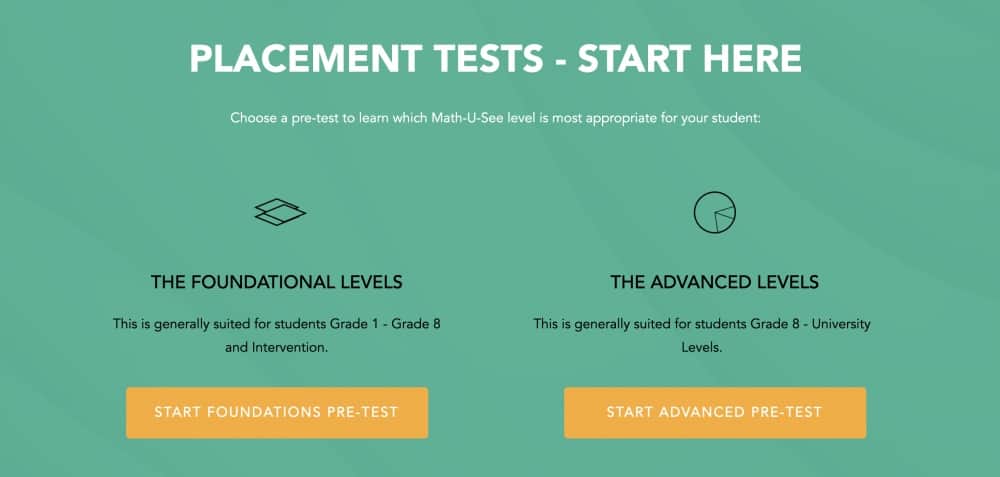
Why it's important to encourage student mistakes
There is no such thing as learning without mistakes. It simply doesn't exist.
By "making a mistake," it means you've applied yourself to the best of your ability and it hasn't worked out right. Instead of criticising your student for "not being good enough," it's important to encourage them for the fact that they put in effort.
Plus, mistakes make it much easier for you as the parent or teacher to identify problem issues and make strategies to fix those areas.
It's really a win-win situation for everyone.
Learn how to make your student's mistakes a valuable part of their journey to maths mastery
As a child, did you learn how to ride a bike? How many times did you fall before you were able to master the process? When you were learning to cook, how many times did you undercook or burn the food before you figured out how to make your food look like the recipe?
In today’s academic environment, students have a legitimate fear of making mistakes because they deem mistakes as failures rather than a part of the learning process. So much pressure is put on making good grades that the actual learning process no longer welcomes the inevitable mistakes that occur throughout it. Most of the pressure is brought on by children who simply want to do well, while the rest is a result of the parent or teachers reaction to it.
So how can we help change the negative perceptions associated with student mistakes so they can more easily bounce back?
Students have a legitimate fear of making mistakes because they deem mistakes as failures rather than a part of the learning process. Let's do our part to change this!
1. Explain why mistakes are valuable
Make sure your student understands that mistakes are a valuable part of the learning process. Without a mistake, you have no way of identifying deficiencies. Rather than simply pointing out that an answer is incorrect, help them associate the mistake with a learning opportunity. By helping them recognise the learning process in everyday things such as cooking or riding a bike, you can help them understand that mastering a task requires adjustment and repetition.
Also, be mindful of the way you communicate a mistake. Avoid using words, phrases or body language that make mistakes feel like failures. Avoid sighing or shaking your head when identifying a mistake. Instead of saying the answers are “wrong” say “almost” then walk them through the problem. The more accepting you are about the mistake the less significance your student will place on them and the more eager they will be to correct them.

2. Identify the reason for the mistake
Mistakes in math are usually the result of a simple error in computation or a single concept applied incorrectly to several questions. The “fix” is typically easier than how big the problem feels to your student in that moment. Communicate the value of the mistake then proceed to figuring out where the error occurred.
Allow them to walk you through the steps they took to arrive at the answer. Simply looking at the problem again will often help them to find the mistake on their own. Perhaps they added incorrectly or forgot to carry a number. Easy fix! However, if they are unable to find their error; figure out where in the process they faltered, show them how to derive at the correct answer and begin purposeful practice. Purposeful practice involves isolating what’s not working to master the skill that is causing the difficulty. The key element of purposeful practice is repetition. No one learns to ride a bike the first time they try. Usually you start with balancing before you even begin to peddle. The same thing applies here. Master the concept before moving on to the next one.
With the Math-U-See program, when a student requires further extension we can revisit using the manipulatives to consolidate the students understanding of the ‘how’. Then continue to practice for mastery using the student workbook. This methodology is referred to as Concrete – Graphical Representation – Abstract, which takes a student from a concrete/hands on knowing before progression to the abstract or written application.
3. Acknowledge what worked
Imagine how you feel as an adult within your work environment. Although you understand why it happens, it’s difficult to be singled out for your mistakes but seldom rewarded for the things you do right. Now imagine those pressures for a child who is less equipped to deal with that kind of scrutiny.
Find areas in your student’s work to praise them for a job well done. Did they follow directions? Did they write neatly? Were they able to get 2 of 3 steps correct before they faced a challenge? No matter how simple it may be, recognizing your student’s efforts will instill a sense of confidence that makes the process of learning a much more enjoyable experience for them.
Ultimately, mistakes create the best opportunities for learning. Helping your student recognize the value of their mistakes will make the journey to maths mastery a much more gratifying one!
What if they really don't understand what's being taught?
If your student is constantly making mistakes with maths, and it feels like you're hitting your head against the wall, they might not be understanding what's being taught.
You can work with your student to diagnose what they know - and what they don't know - about maths by taking this easy, online diagnostic test.
The Online Placement Test helps you determine what gaps are missing in their maths education, and where to start to fix those.
You can take the free online Placement Test here:
And remember, we're here to help if you need anything!
Warmly,
The Team at Maths Australia

